








Planner-in-Residence
FSU, Department of Urban & Regional Planning

Northeast Florida Regional Council


 Steve Swann, PE City Engineer City of Atlantic Beach
Dennis J. Smith, AICP
Fara Ilami Regional Resiliency Manager
Steve Swann, PE City Engineer City of Atlantic Beach
Dennis J. Smith, AICP
Fara Ilami Regional Resiliency Manager

This session will explore approaches to improve hazard mitigation and resilience across Florida. Panelists will highlight efforts at the municipal, county, and regional levels to:
• Develop local vulnerability assessments, resilience plans and projects
• Align mitigation plan processes between jurisdictions and across different risk-based plans,
• Address the unique concerns of socially vulnerable populations
• Advance mitigation assessment and planning through regional collaboration
The goal of the session is to present new insights, approaches, and results that can be used by planners from all specializations to make Florida a safer state.








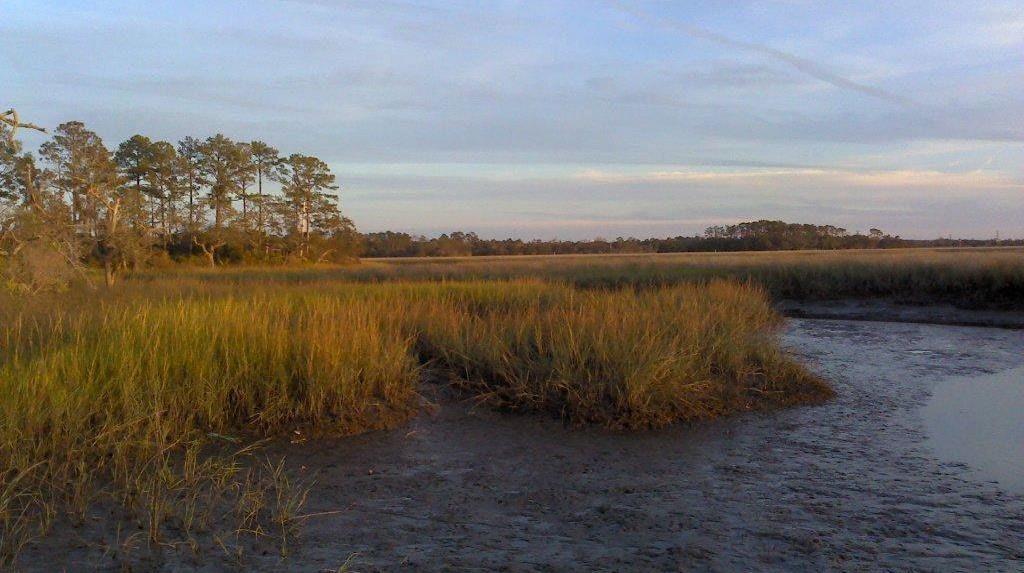
• Tidal records indicate steady rise in local sea level over past 90 years

• Rate of change in sea level rise is accelerating
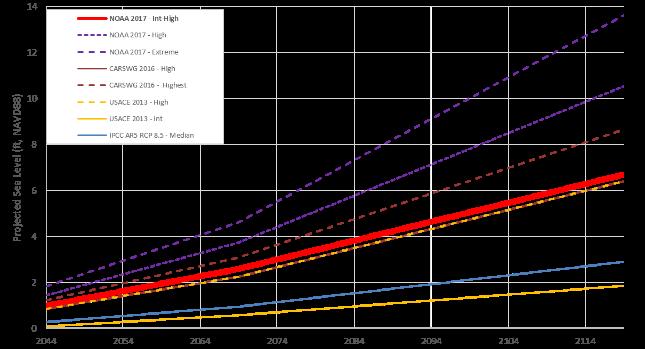

• Atlantic Beach is flat and surrounded by tidal waters
• Parts of Atlantic Beach already experience “sunny day” flooding


• Completed in June 2019
• Modeled 25, 50, & 100 year scenarios for:
• Sea Level Rise
• Nuisance or “Sunny Day” flooding
• Storm Surge & Rainfall Flooding
• 100-Year Flood Risks
• Assessed potential risks to property and infrastructure/facilities



• Identified areas/assets that are more sensitive to flooding than others.
• Mapped critical assets inside COAB and our service. Exposure of each asset ranked according to current and future flooding.

• Completed June 2021
• Protect, plan for, and adapt to the impacts of sea level rise and climate change for our citizens and infrastructure



• Identified goals and strategies to minimize risk
• Established a process to implement strategies

• Identified the tools to take action
• Identified priorities and timeframes for implementation of strategies




• Floodplain regulations

• Building codes and standards – FFE

• Redevelopment standards – LID, Stormwater Retention

• Setbacks and buffers






• Protect and enhance the performance of major drainage ways
• Initiate an in-depth study (Major drainage projects in the context of CIP)

• Develop a 50-year plan for managing major drainage ways

• Planned improvements to major ingress and egress
• Determine improvements for vulnerable roads prior to repaving

• Share data with FDOT to help their decision process for State Roads
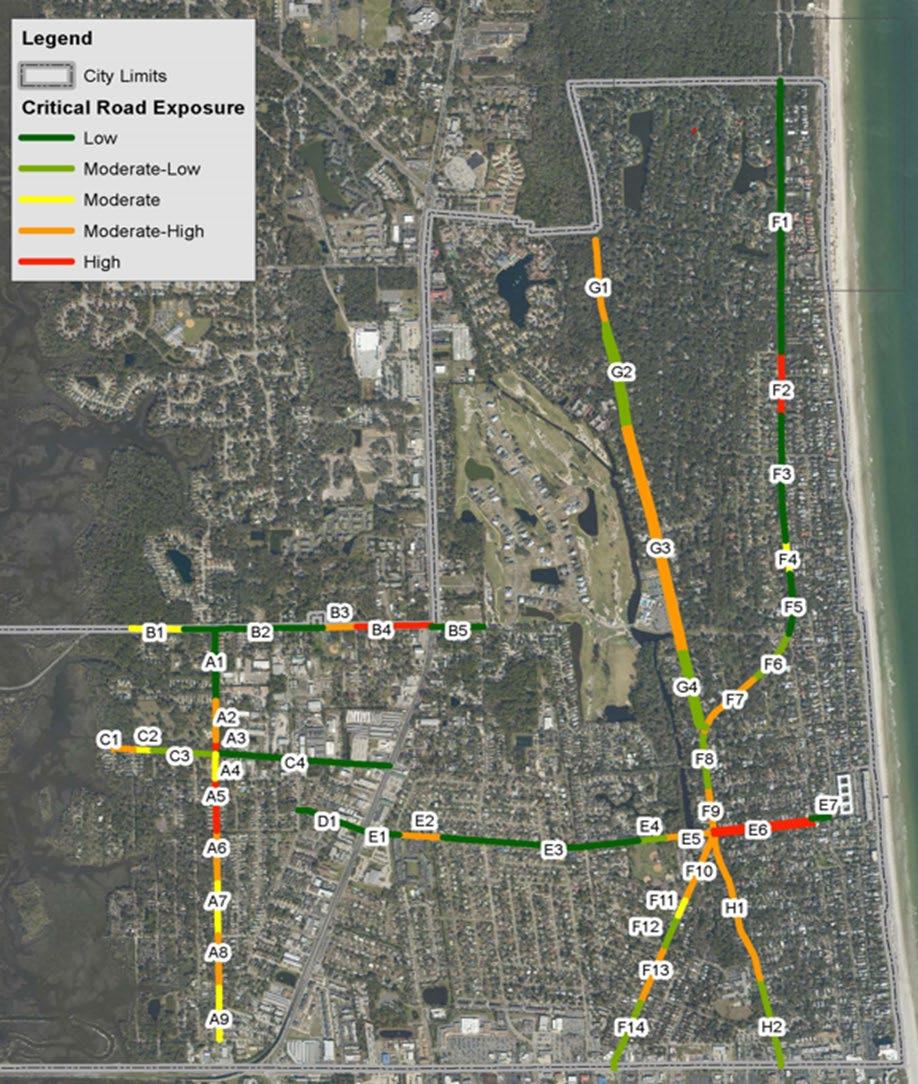



• Protect from 100 year flood events


• Protect from 100 year flood events
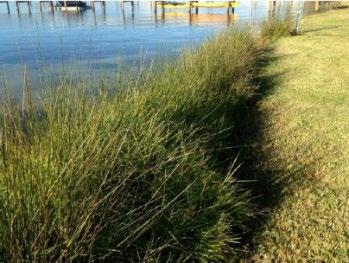
• Develop a really good outreach & education program for buy-in
• Start with updating building codes, land use regulations, etc.
• Because of cost & long lead times - Start planning for implementation of infrastructure projects based on ranking early
• Incorporate infrastructure projects in CIP so they don’t get forgotten
• SLR predictions change - Review & update VA & Adaption plan at least once every 5 years




Florida is a historic leader in mitigation planning
• Local Government Comprehensive Plans, Coastal Management Elements, and Post Disaster Redevelopment Plans. (Omnibus Growth Management Act of 1985. )
• Local Mitigation Strategies (LMS) (Voluntary with State funding support, 1997 – 1999. Preceded the Federal Disaster Mitigation Act of 2000 requirements)
Positive changes in the last 25 years include,
• More plans at all levels of government that include requirements to address hazards or disaster resilience/ sustainability
• More and better risk assessment tools, including social vulnerability assessment
• More federal and state -sponsored programs promoting and/or funding mitigation plans and projects
What is missing in Florida?
Guidance on how to best coordinate planning multiple efforts around,
• Risk assessment tool and applications (physical and social vulnerability)
• Public engagement
• Project lists
• Housing and homelessness

• Florida State University was awarded a HUD Community Development Block Grant (CDBG -MIT), administered through the Department of Economic Opportunity's “Rebuild Florida” initiative.
• The joint FSU-FAMU interdisciplinary research team includes faculty from the Departments of Engineering, Geography, and Urban and Regional Planning, as well as partners from the Florida Association of Counties.

• The two -year study will examine Inter -Regional Mitigation Planning Coordination and the Integration of Social Vulnerability and Housing Assessments into the planning process.
• The study is focused on Broward County, a HUD -designated Most Impacted and Distressed (MID) county but will have future benefit to the entire State of Florida.
• The purpose of the project is to develop a more efficient, streamlined, and coordinated hazard planning process at the state, regional, county, and municipal levels with a specific focus on understanding and prioritizing the needs of socially vulnerable populations and assessing and ensuring the stability of post -disaster housing opportunities.
2023 Task Deliverables
Memo 1.1.
Documentation and Findings of the Hazards Plan Review Process

Conduct Plan Review
- Form an Expert Panel from hazard mitigation practitioners.
- Assemble list of local plans (Broward County) that address hazard mitigation, and

- Obtain Expert Panel review of that comprehensive list and identify opportunities for data sharing and improvement.
Memo 1.2.
Recommendations on Hazard Plan Alignment
Develop draft recommendations
- Describe how planning processes such as plan preparation, review, public notice, plan adoption and updates, can be better aligned.
- Consult the Expert Panel, for review of and concurrence with recommendations
2024 Task Deliverables
Memo 2.1. Review of Social Vulnerability Assessment Approaches and Practice
Conduct a literature review of academic research and governmental plans on methods of assessing social vulnerability, evaluate methods of analysis and prepare recommendations on their use.

Memo 2.2 Documentation of Housing Recovery Capabilities and Applications
Conduct a survey of and summarize local government housing plans to identify their focus on disaster mitigation and recovery and conduct interviews of housing sector practitioners to identify local capabilities and priorities related to hazard mitigation and recovery.
Memo 1.3. Best Practices in Using Analytical Tools in Hazard Planning
Condense previously submitted project deliverables into a guidance document and develop planning tools recommendations.
Final Products
Task Deliverables
Planning Document, Best Practices in Coordination for Hazard Planning
Synthesize and summarize all project deliverables and develop a production-quality planning recommendations document.
Public Information and Professional Outreach Materials
Host deliverable review and input session from the Expert Panel and develop public information and outreach materials for professional planners.

Conduct research on existing plans, programs, and grant resources
Host Expert Panel Session. Receive concurrence on plan types to be reviewed
Prepare preliminary recommendations based on the plan review and expert panel session.
Form a state -level advisory panel and Broward-area expert panel

Develop a plan review matrix, a tool for documenting findings
Complete
• Memorandum 1.1: Documentation and FindingsoftheHazard Review Panel
Administer a survey to the expert panel on planning coordination opportunities
• Memorandum 1.2: Recommendations on PlanAlignment
REGIONAL PLANS Individual Plan
Regional Climate Action Plan Southeast Florida Regional Climate Compact
COUNTY PLANS Individual Plan
Local Mitigation Strategy (Individual by municipality)
Comprehensive Plan Broward County Comprehensive Plan Documents
Community Rating System (CRS) Applications (Individual by municipality)
MPO Plan Broward MPO Commitment 2045 Metropolitan Transportation Plan
Affordable Housing Advisory Committee (AHAC) AHAC Report to Broward County Commissioners
HUD Plan Broward County Consolidated Plan 20202024
Housing Inclusive Plan Housing Broward: An Inclusive Plan
MUNICIPAL PLANS Individual Plan
City Comprehensive Plan (Individual by municipality)
Community Rating Systems Plan (CRS) (Individual by municipality)
Watershed Plan Pilot Project Broward Watershed Case Study
Watershed Master Planning Initiative

Pilot Program - Davie/Dania Beach Sub
Watershed
Ft. Lauderdale AHAC Affordable Housing Advisory Committee
Six Separate Worksheets
• Public Engagement
• Risk Assessment
• Social Vulnerability
• Housing
• Project Lists (Capital Improvements)
• Intergovernmental Coordination
Worksheet Elements
• Plan Reviewer
• Plan Name
• Link to Plan

• Jurisdiction
• Plan Type
• Summary of Relevant Statements, Policies, or Procedures
• Funding Sources (if any)
Share Point Link:
Plan Review Matrix
• Citations / References (page number)

• Multiple opportunities currently exist at all levels of government for coordination in support of plan development
• While some plan-specific consolidation exists (e .g. Local Mitigation Strategy plans), there is no central repository of all mitigation projects across all plan types
• Project lists, where they exist, are used for multiple functions beyond simply identifying future initiatives, including leveraging additional resources and expanding partnerships and collaborations
• While public engagement is high within specific planning processes, the coordination of these activities between jurisdictions and with multiple agencies is more limited
• A wide range of modeling tools and analytical techniques are used to support risk assessment and to evaluate social vulnerability within the plan
• Issues related to housing and homelessness within the context of disaster preparedness, recovery, and mitigation are not well addressed in current plans

Coordination
Consolidating Project Lists
Risk Assessment
Housing and Homelessness
• Several examples exist of groups that cut across jurisdictions and areas of expertise to address hazard mitigation or related issues. These include the SFRCC and the Broward Enhanced Local Mitigation Strategy Working Group. These groups provide a structure that can facilitate further discussions about plan process alignment .

• Practitioners often work in silos of expertise . Effective plans require taking a multidisciplinary, systems approach. It is in each practitioner’s best interest to use everyone’s expertise to work together to bring the concept of hazard mitigation planning into discussions of resilience planning and implementation.
• Practitioners need a list of potential partners and their areas of expertise . The speaker list from the SFRCC conference and other events may be a good source to build this resource . Lists like this need to be kept up to date .


1. Utilize existing organizational structures to facilitate discussions on plan process coordination. Broward county has the advantage of having strong inter -county (the SFRCC) and intra-county groups (the Enhanced Local Mitigation Strategy Working Group) that can perform this function. Outside of Broward County, the Local Mitigation Strategy Working Group could serve this function.
2. Create and consult with a county/regional cadre of subject matter experts to support plan development and discussions on plan alignment and integration. Effective plans require taking a multidisciplinary, systems approach. Opportunities for plan enhancement and alignment can be missed if the right partners are not known or involved. This list could be maintained on a county resilience office or emergency management office website .
3. Use regular forums, such as working group meetings or professional conferences, to discuss and advance the issue of plan alignment . For Broward County, the SFRCC conference could serve this function. It could be integrated into conferences such as the Florida Governor’s Hurricane Conference, Florida Association of Counties Annual Conference, Florida Planning Conference, and/or the Florida Emergency Preparedness Association Conference, as examples.
• Broward County has a platform, which is a component of the Broward County Resilience Plan (in development), that has the potential to serve as a county-wide list of mitigation initiatives across jurisdictions and plan types. The platform will let municipal stakeholders and residents view project plans, needs, and progress.
• The Broward County Resilience Plan is an example of a county-wide initiative to examine full scale risk assessments and economic/asset assessments that the county is leading and extending these assessments to municipalities throughout the entire county.
• Prioritized project lists tend to identify projects designed to mitigate physical vulnerability rather than social vulnerability.

1. Develop a county-level platform, like the Broward County Resilience Plan, that allows state, regional, county, and municipal partners to upload proposed projects. The database would include a map function as well as metadata on project cost, timelines, and identified or proposed funding.

2. Develop a project evaluation framework to support the comparison of projects from different plans and jurisdictions or agencies based on a set of standard qualitative and quantitative metrics, including but not limited to ; cost/ benefit -cost ; geographic area of benefit, including interjurisdictional impacts; benefit to special populations; and fundability or the timing and likelihood of completion.

• There are a wide range of risk assessment models and tools available to and being used within Broward County by city, county, and regional organizations.


• Source data for risk assessment models and tools is available from many sources, including risk assessments reports completed in Broward.
• Local governments may need technical assistance in selecting the best tools for local risk assessment . Some tools may have too wide of a geographic focus or be needlessly complex and difficult to use to be helpful to municipalities.
• A tool is only as good as the data that goes into it . Tools should be vetted to ensure the best available and most relevant data can be obtained and used.
• An awareness gap may exist regarding what data, analytical tools and models, and results are available to local municipalities.

1. Develop a central clearinghouse , (for Broward County this could be the Broward County Resilience Plan), that lists risk and social vulnerability assessment tools used to support plans throughout the geographic area that comprises a county. This would include state and regional applications as well as those specific to the county or its municipalities. By making this information unavailable, the possibility for risk data to be shared between plans increases especially plans that might not necessarily be grouped together (such as a County-wide affordable housing study and a municipality’s Community Rating System application).

2. Evaluate the current suite of tools currently in use or programmed to be used in plan updates
Countywide . There is some benefit in uniformity in tool selection and it may facilitate the sharing of data and comparison results between plans. An evaluation and selection process might also support cost -sharing between units of governments or agencies.

3. Develop guidance material, especially for municipalities, on selecting the best physical risk and social vulnerability assessment tools upon which to base plan recommendations upon. Assessment tools each may have different geographic scales and levels of complexity.
4. Provide technical assistance and/or training at the County level, either through staff or consultations, on how to best apply risk assessment tools.
• There are a wide range of risk assessment models and tools available to and being used within Broward County by city, county, and regional organizations.


• Source data for risk assessment models and tools is available from many sources, including risk assessments reports completed in Broward.
• Local governments may need technical assistance in selecting the best tools for local risk assessment . Some tools may have too wide of a geographic focus or be needlessly complex and difficult to use to be helpful to municipalities.
• A tool is only as good as the data that goes into it . Tools should be vetted to ensure the best available and most relevant data can be obtained and used.
• An awareness gap may exist regarding what data, analytical tools and models, and results are available to local municipalities.

1. Review, integrate, and/or link existing plans and policies related to disaster housing provision into hazard plans. There is a gap in addressing longer -term, systemic predisaster housing issues, including housing availability, affordability, and supply chain support in most emergency management planning.
2. Anticipate and plan for the post -disaster needs of the unhoused. While homelessness is an ongoing and persistent concern statewide, social and economic challenges, as well as the limitations to governmental responses, are exacerbated after a disaster .

◼ The purpose of this project is to better understand opportunities for plan alignment to maximize human resource potential and public investments - gettingthemostout ofpeopleanddollars
◼ Task 2 memos are underway and will be completed in Springof 2024, hopefully to coincidewith presentationsat the Florida Governor’s Hurricane Conference
◼ Final project deliverables,including training materials for county and other local governmentofficials,will be completedin the summerof 2024
◼ Keep in touch with the FSU,Department of Urban and RegionalPlanningfor project updates

A
Mark & Marianne Barnebey Planning and Development Lab
https://coss.fsu.edu/barn/
Emergency Management and Homeland Security Program (EMHS)
https://em.fsu.edu/
Florida Resources and Environmental Analysis Center (FREAC)
https://freac.fsu.edu/
Resilient Infrastructure & Disaster Response Center (RIDER)
https://rider.eng.famu.fsu.edu
Note: Subject matter experts work throughout the State University System and in our private colleges. Build partnerships with the faculty in your region or area of interest .





• Overview of Regional Councils and Resiliency Programs

• Planning efforts currently underway
• Regional Resiliency Action Plans
• Vulnerability Assessments Adaptation Plans
• Military Installation Resilience Review
• Comprehensive Climate Action Plan
• Multi-Regional Planning and Mitigation Assessment
• Integration of planning efforts

• Identifying commonalities
• Coordinating methodologies for consistency
• Equity considerations

Regional Planning Councils are multi-purpose entities comprised of local governments that solve problems at the regional level and help communities grow.

What Regional Planning Councils do:
• Communicate Issues
• Convene Stakeholders
• Collaborate with Others
• Calculate and Analyze
• Construct Solutions

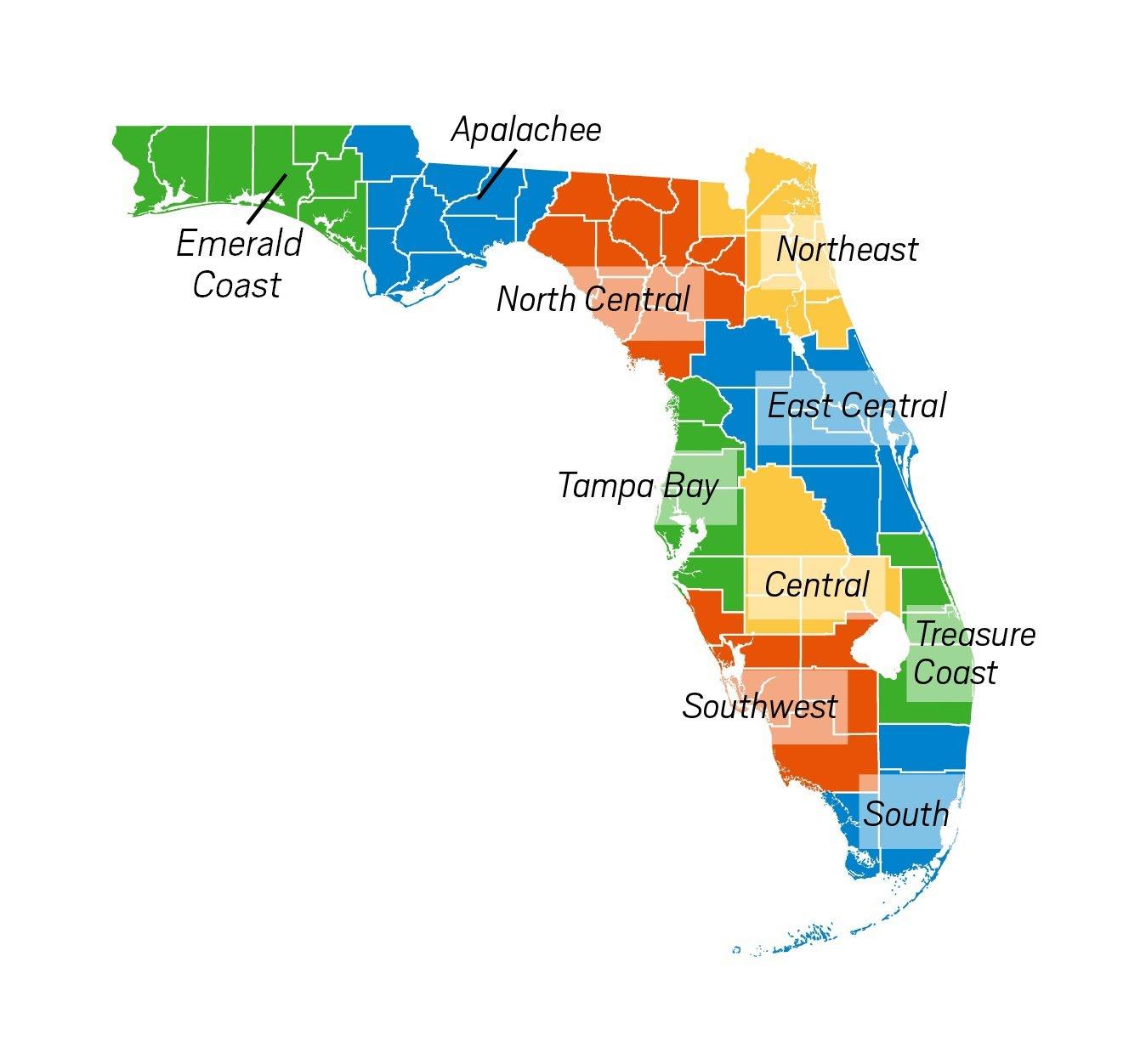

Engineering
Regional resiliency collaborative

Policy & Planning
Resilience
Vulnerability assessments and adaptation plans
Environmental Science
Funding
Social Sciences & Human Behavior
Multi-scale project partnerships
Local, regulatory, and military coordination
Economics, Finance, Insurance
Educational presentations and community events
Support for disaster recovery groups










• 20+ member organizations
• Vision: Resilient First Coast will actively promote regional cooperation on initiatives that improve the environment, quality of life, infrastructure, and economic resilience of Northeast Florida to adapt and thrive in the face of acute shocks and chronic stresses related to climate change.


• 2023-2024 Objective: Creation of a Regional Resiliency Action Plan
https://www.resilientfirstcoast.com/








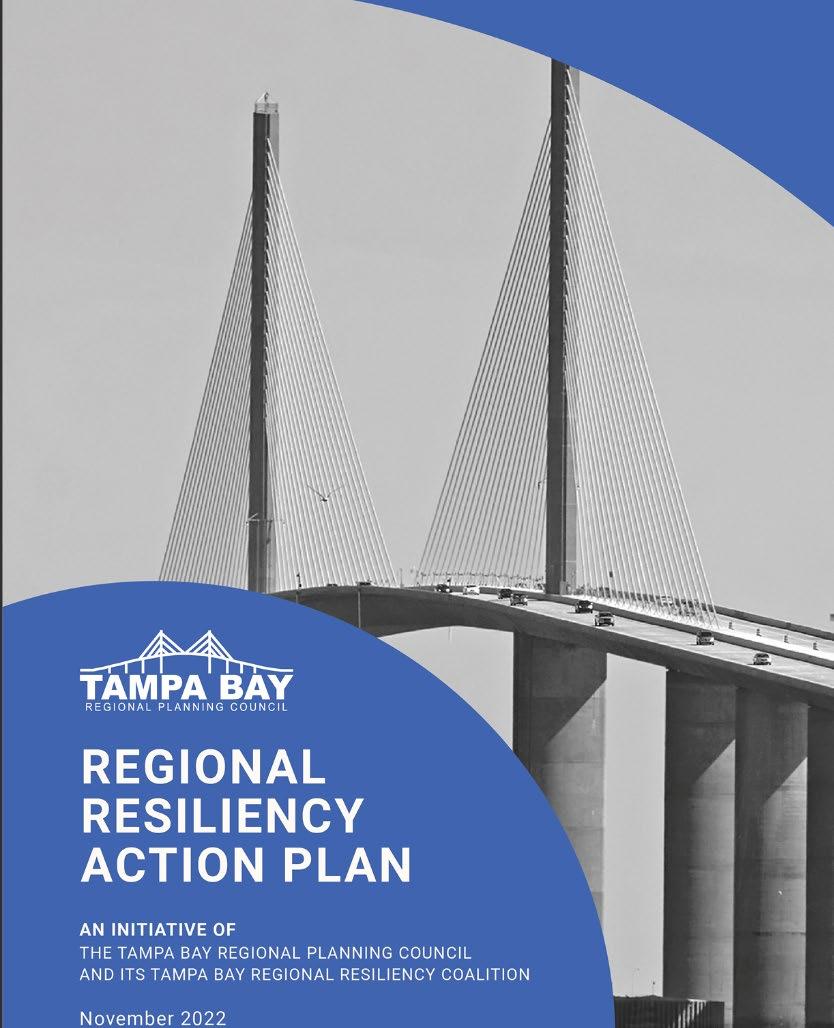

Scope for Northeast Florida:
◼ Living document
◼ Focus on effective and equitable solutions fo r resilience
◼ Designed to guide action over next 5 years
◼ Voluntary tool for local and regional governments
◼ Include best practices for 4 pillars of Resilient First Coast

◼ Based on sound science and methodologies
◼ Include goals and metrics to track success
◼ Consider vulnerability assessments and other data
◼ Use regional-scale risk assessment
◼ Consider grey/green/blue strategies
◼ Include regional mitigation measures
◼ Complement other efforts (Comprehensive Climate Action Plan, etc.)
◼ Input from Resilient First Coast Committees and Collaborative
◼ Encourage regional cooperation and collaboration

Phase 1 (2022-2023): Standardize methodologies and reporting, improve communications among jurisdictions, and establish a clearing house of information about what other local governments in northeast Florida are doing in relation to the completion of comprehensive VAs.
Phase 2 (2023-2024):
◼ Coordinate with other entities across the state on Vulnerability Assessments and Adaptation Plans.
◼ Build additional capacity.
◼ Investigate ways to standardize methodologies for compound flooding.

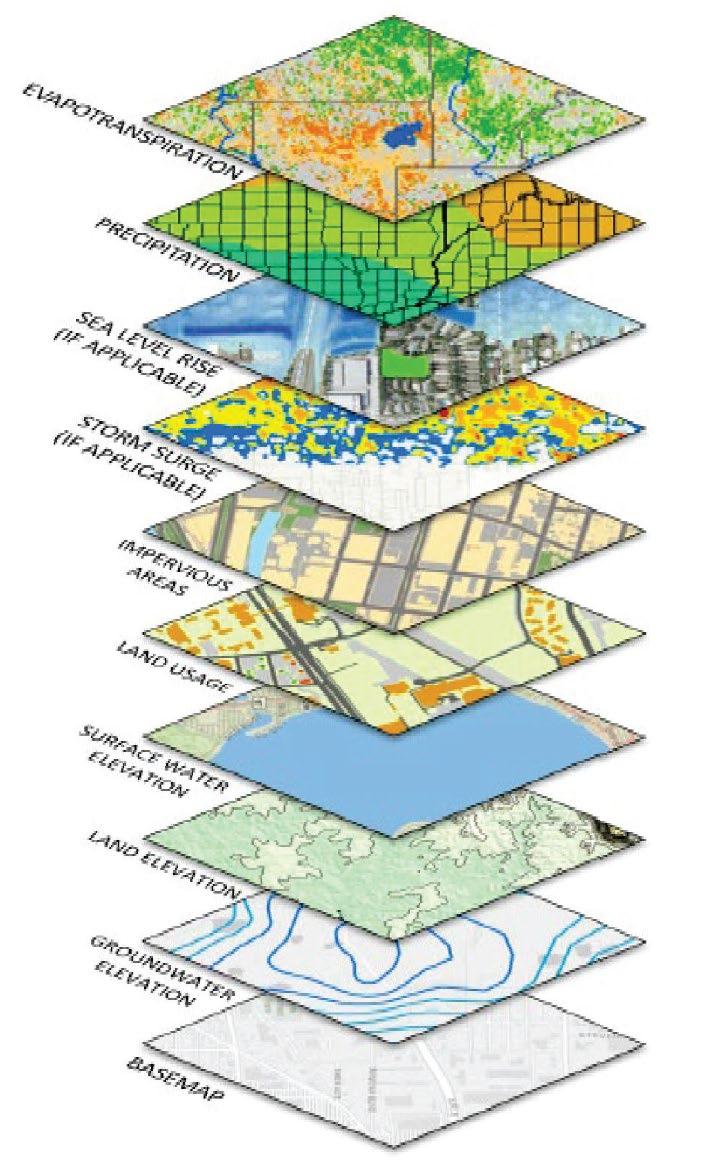
◼ Assist local governments who have already completed Vulnerability Assessments with applications for Implementation grants.
◼ Reach out to local governments not already doing Vulnerability Assessments to offer assistance.



1) Planning grants to develop strong climate pollution reduction strategies ($250 million)
*Regions opting in for $1 million:
◼ Jacksonville MSA

◼ Orlando -Kissimmee -Sanford MSA
◼ Tampa-St. Petersburg-Clearwater MSA
◼ North Port -Sarasota-Bradenton MSA
◼ Miami-Fort Lauderdale -Pompano Beach MSA
2) Competitive implementation grants plans into action ($4.6 billion)
*These will become available after comprehensive plans are complete


• Purpose: Provide a cohesive, statewide approach to resilience planning, including inland counties, in resilience efforts, and a regional framework for funding mitigation projects and creating implementable strategies and plans across Florida.

• Components:
• Future Extreme Rainfall Modeling
• Mitigation Needs Assessment, Template and Mitigation Priority Areas and Project list
• Small Area Mitigation Plans
• Regional Resilience Exposure Tool (R2ET)
• Interactive Best Practice Application
• Stakeholder Engagement

◼ Consideration of impacts of environmental hazards on people, places, and prosperity
◼ Multiple tools available to analyze factors
◼ Development of targets
◼ Planning mitigation strategies
◼ Development of best practices
◼ Community engagement

◼ Policy changes
◼ Resiliency!
◼ Hazards to analyze for exposure:
◼ Sea level rise
◼ Storm surge
◼ Floodplain

◼ Rainfall
◼ Tidal flooding
◼ Compound flooding
◼ Factors to analyze for sensitivity:
◼ Demographics
◼ Economic
◼ Household composition
◼ Employment
◼ Transportation
◼ Health
◼ Factors to analyze for adaptive capacity (examples):
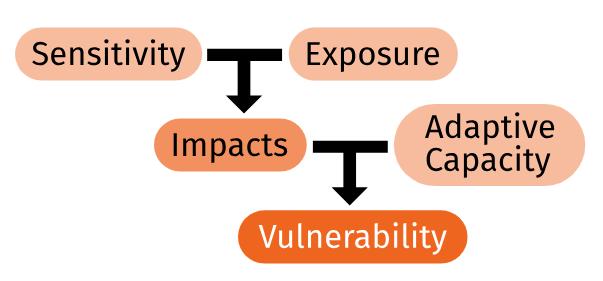
◼ Ability to raise structure
◼ Location of utilities
◼ Ability of habitat to migrate

• Below Poverty Level

• Unemployed
• Income
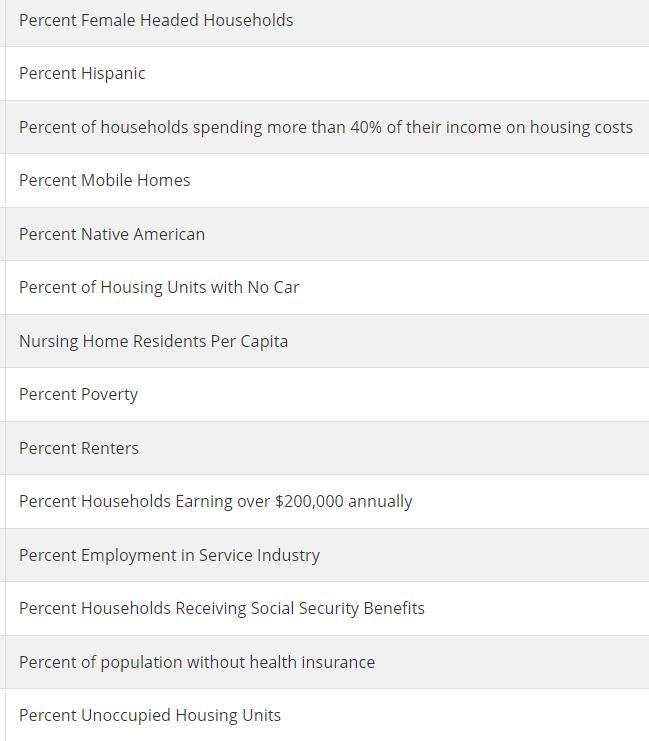
• No High School Diploma
• Aged 65 or Older
• Aged 17 or Younger
• Older Than Age 5 with a Disability
• Single-Parent Households
• Minority
• Speak English "Less Than Well"
• Multi-Unit Structures
• Mobile Homes
• Crowding
• No Vehicle
• Group Quarters
Resources:
https://www.resilientfirstcoast.com/
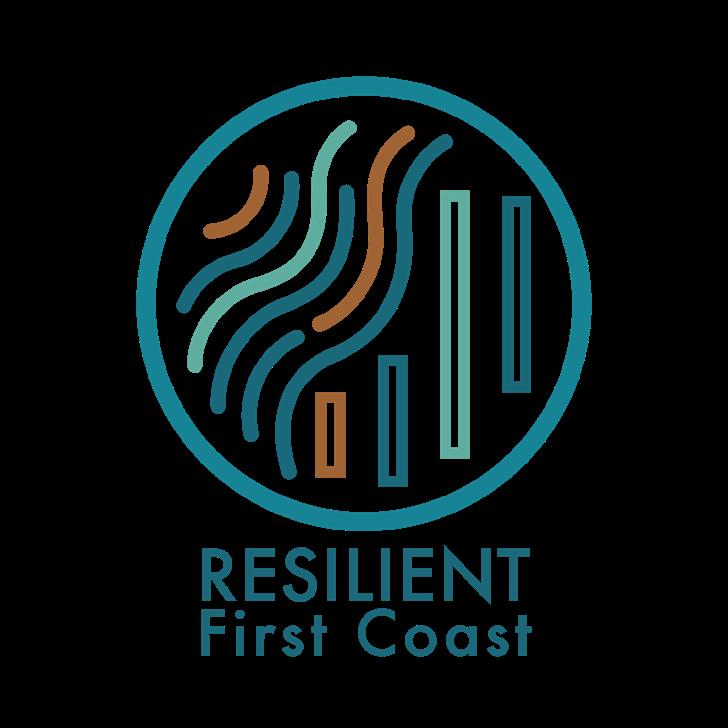
https://southeastfloridaclimatecompact.org/recommendations/
https://www.ecfrpc.org/r2c-srap
https://tbrpc.org/resiliencyplan/
https://marshforward.org/
Fara Ilami, Regional Resiliency Manager
Northeast Florida Regional Council

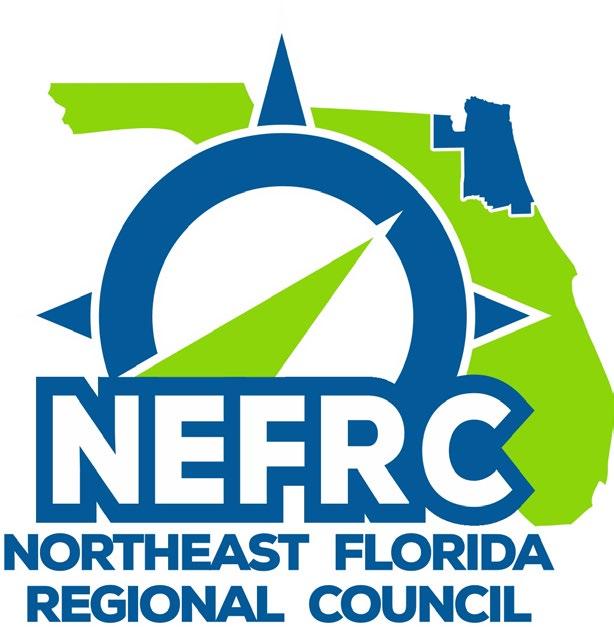
filami@nefrc.org
904-279-0880 x 113
https://www.nefrc.org/resiliency
https://oldcc.gov/our-programs/installation-resilience
https://www.epa.gov/inflation-reduction-act/climate-pollutionreduction-grants
https://www.napsgfoundation.org/resources/indices-guidance/



Steve Swann, PE City Engineer City of Atlantic Beach
Dennis J. Smith, AICP


Planner-in-Residence
FSU, Department of Urban & Regional Planning
Fara Ilami
Regional Resiliency Manager


Northeast Florida Regional Council
Desk: 904.247.5874
Email: sswann@coab.us
Desk: 850.645.7170
Cell: 850.294.3026
Email: djsmith3@fsu.edu
Desk: 904.279.0880
Email: filami@nefrc.org